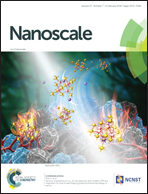Band alignments and heterostructures of monolayer transition metal trichalcogenides MX3 (M = Zr, Hf; X = S, Se) and dichalcogenides MX2 (M = Tc, Re; X=S, Se) for solar applications†
Abstract
Knowledge of band alignments and heterostructure formations is fundamental for a new generation of optoelectronics based on two-dimensional layered materials. Herein, band alignments and heterostructures of IVB-VIA monolayer MX3 (M = Zr, Hf; X = S, Se) and VIIB-VIA monolayer MX2 (M = Tc, Re; X = S, Se) are calculated by density functional theory with hybrid functionals. The results indicate that for monolayer MX3, the valence bands mainly depend on the p state of the chalcogens and the conduction bands mainly depend on the d state of the transition metals. In contrast, for monolayer MX2, both valence and conduction bands depend on the d state of the transition metals. This suggests that their work functions are obviously different. Meanwhile, the characteristics of the band alignments and the planar-averaged local density of states show that ZrS3, HfS3, TcSe2 and ReS2 could be favorable candidates for photocatalytic water splitting. ZrS3, HfS3 and MX2 with the same structures are able to form type II heterostructures at their interfaces, which could be used for solar energy conversion. The power-conversion efficiency of an MX3 thin-film solar cell is approximately 16–18%, which is higher than those of MX2 thin-film solar cells. In addition, for heterostructures composed of MX3, both of the two kinds of material (M and X) play an important role in every band formation. Meanwhile, for MX2 heterostructures, almost every band depends only on a single material. The charge density difference of the heterostructures demonstrates a higher charge accumulation at the interface of MX3 heterostructures than that of MX2 heterostructures. These phenomena show that type II heterostructures formed of MX3 are more stable than those of MX2.



 Please wait while we load your content...
Please wait while we load your content...